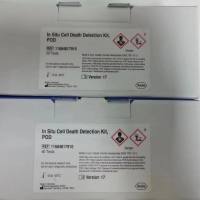Fluorescence In Situ Hybridization for Cancer-Related Studies
互联网
496
Cytogenetic analysis of tumour material has been greatly enhanced over the past 30 years by the application of a range of techniques based around fluorescence in situ hybridization (FISH). Fluorescence detection for in situ hybridization has the advantage of including the use of a multitude of fluorochromes to allow simultaneous specific detection of multiple probes by virtue of their differential labelling and emission spectra. FISH can be used to detect structural (translocation/inversion) and numerical (deletion/gain) genetic aberrations. This chapter will deal with FISH methods to detect and localize one or more complementary nucleic acid sequences (probes) within a range of different cellular targets including metaphase chromosomes, nuclei from cell suspension, and formalin-fixed paraffin-embedded FFPE tissue sections. Methods for the efficient localization of probes to FFPE tissue cores in tissue microarrays (TMAs) are also described.









